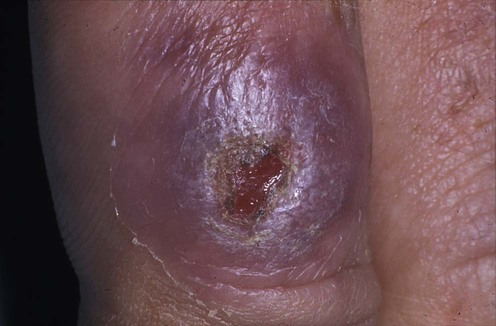Orf

First-line therapies
Orf. Report of 19 human cases with clinical and pathological observations.
Leavell UW, McNamara MJ, Muelling R, Talbert WM, Rucker RC, Dalton AJ. JAMA 1968; 204: 657–64.
Lymphangitis and lymphadenopathy occurred in three of 19 cases.
Awareness of the risk of secondary bacterial infection is important.
Second-line therapies





 Surgery
Surgery Cryotherapy
Cryotherapy Idoxuridine
Idoxuridine Cidofovir
Cidofovir Interferon
Interferon Imiquimod
Imiquimod
